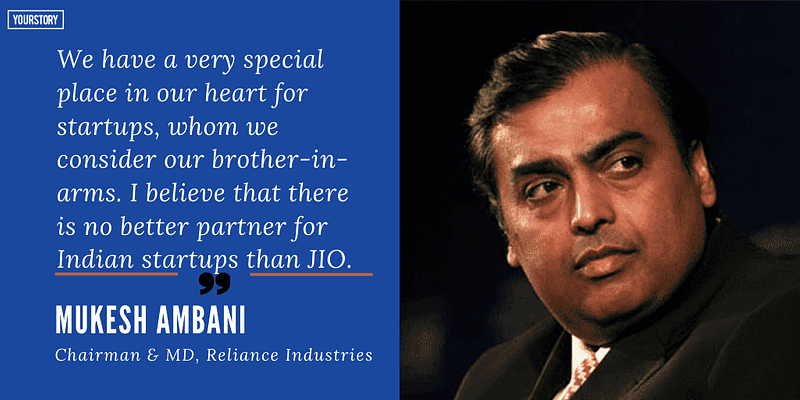How GST has benefitted businesses and its impact on NBFCs in India
The Goods and Services Tax (GST) is the biggest tax reform to be implemented in independent India that has streamlined the country’s indirect taxation system, underlining its promise of a unified domestic system of indirect taxes. Its impact on the economy and various sectors have been largely positive, barring some initial teething problems that are only expected with a reform undertaken on such a large scale. Nevertheless, the impact of the reform on the services sector, specifically the financial services sector, has also been significant.

Although it has increased the compliance requirements for the Micro, Small, and Medium Enterprises (MSME) sector or financial services providers like non-banking finance corporations (NBFCs), the benefits of the tax reform will be particularly substantial for the sector in the long term.
One such development with the tax reform that will deliver not only long-term but also short-term benefits is that the GST system operates based on a strong technological foundation. Here are some of the key benefits of the tax system for the business ecosystem:
GST has eliminated the cascading effect of tax
The Goods and Services Tax brings all indirect taxes under a single ambit as a comprehensive tax structure. This means the cascading effect of taxes, or the ‘tax on tax’ effect, which was a huge burden to businesses in the previous regime, will no longer be a problem.
The threshold for registrations are higher
Previously, in the Value Added Tax (VAT) structure in most states, businesses having a turnover upwards of Rs 5 lakh incurred VAT. This limit also varied from one state to the other, while service providers having a turnover of less than Rs 10 lakh were exempt from paying service tax.
However, under the GST regime, the threshold is higher, with small traders and service providers with a turnover of less than Rs 20 lakh being exempt.
Small businesses benefitting from composition scheme
Under the GST, smaller trading concerns and service providers with a turnover of Rs 20 to Rs 75 lakh can benefit from the Composition Scheme, wherein taxpayers with lower liabilities can avoid complex processes and pay GST on a fixed turnover rate.
Online procedures have made compliance simpler
The entire process of registering for GST to filing returns has been shifted online, making it extremely simple and efficient. This has particularly been advantageous to SMEs and smaller startups, which no longer need to spend a huge amount of time, money, and effort to acquire licenses or register for multiple taxes such as VAT or excise duty.
Further, the previous indirect tax system had no provision for SMEs to avail credit on the value-added tax paid on capital goods, the cost of which was borne by the company. However, under the GST regime, SMEs, smaller NBFCs, and various other entities dealing in goods and services can avail credit on input tax paid on the supply of goods as well as services.
Impact of GST on NBFCs in India
During the previous indirect tax regime, lending services facilitated by NBFCs were largely exempted from the purview of indirect taxes. There were only a few services on which a centralised service tax was levied, irrespective of where in India the services were rendered from. This has changed with the implementation of the GST regime since NBFCs are required to register their business in each state where they offer these taxable services. Some of the changes that NBFCs have seen with GST include:
- Under the previous regime, NBFCs were liable to pay 15 percent tax on certain services rendered, which following the implementation of GST has risen to 18 percent.
- Before GST, NBFCs could register their business centrally. However, with GST, they need to register in each state where they are present.
- If NBFCs engage in the inter-state supply of services between same entity branches, they will attract IGST.
- The number of GST returns to be filed are 37 for each state, and 61 returns in case of ISD and TDS provision are applicable.
Further, the implementation of GST has also increased the billing and compliance requirements, and now necessitates additional documentary evidence as well as monthly compliances for multiple locations, as compared to the indirect tax regime. However, with the GST governance framework incorporating information technology (IT) systems for compliance and filing returns, NBFCs can ensure smoother workflows and quicker reporting by automating the filing process.
On the other hand, GST will also significantly impact the evaluation processes, since service tax was assessed by the regulating authorities in the state where the company’s branch was registered. Additionally, each registered branch of the NBFC had to validate its position for the charge-ability in the respective state and provide a reason for utilising the input tax credit in various states.
It is anticipated the GST could potentially transform the Indian economy, allowing businesses and corporations in the country to augment their overall efficiencies. Furthermore, a unified domestic market will create far greater opportunities for businesses in terms of their ability to expand anywhere in the country. At the same time, it will also provide them with the benefit of lesser production costs, thereby boosting their profitability in the long term.
(Disclaimer: The views and opinions expressed in this article are those of the author and do not necessarily reflect the views of YourStory.)











